- 40th Infantry Division

The withdrawal of the Japanese Forces to the mountains of Iloilo was done by 10 groups going to two destinations, Bocari and Mt. Bongbong*/Mt. Singit. Overall Map The Situation at Jaro
| ORIGIN | DESTINATION | COMPOSITION | |
| 1. | Jaro | Bocari |
Tozuka and Kumai 1. 170 Bn HQ 2. 170 Bn 2nd Co. (Fujii) 3. 170 Bn Labor Plt 4. NCO Cadet Plt (Nakamura) 5. Remaining Div Plt 6. Mizutani Co. 7. MP 8. 171 Bn 1 Plt (Miyamoto) |
| 2. | Jaro |
Mt. Singit |
Saito 1. 170 Bn Saito Guns Co. 2. 171 Bn 1st Cop (Noda) 3. 171 Bn Trench Mortar Plt (Satake) 4. Suzuki Tansport Co. 5. J Civilian Co., Civilians This group got separated from the Tozuka-Kumai group after Jaro and proceeded to Mt. Bongbong, instead of Bocari. Along the way, Japanese civilians committed suicide at Sitio Suyac, Barrio Tigbauan, Maasin. Lieut. Ishikawa must have been with Capt. Saito. Section 8.2 With the road between Jaro and Pavia at the center, the Saitô Force on the right, the Noda Force on the left, the course of the attack was all left with Captain Saitô, with lst Lieutenant Ishikawa as adviser. |
| 3. |
Cabatuan, Iloilo |
Mt. Singit |
Fukutome 1. 170 Bn 1st Co. (120 men) (Fukutome) 2. Airfield Related (130 men) See also: Cabatuan Airfield |
| 4. |
San Jose, Antique |
Bocari |
Yoshioka 1. 170 Bn 4th Co. (Yashioka*) 2. Kai Guns Plt (200 men) 2. Airfield Related (130 men) (Ishida) *Yoshioka |
| 5. | Tigbauan | Bocari |
Kawano 1. 170 Bn 3rd Co. (70 men) (Kawano) Only the forward detachment of Sergeant Kashiwamura was able to break through enemy lines. |
| 6. | Cordova | Bocari |
Toyota 1. 170 Bn 3rd Co. Toyota Plt (30 men) |
| 7. | Pavia | Bocari | |
| 9. | Jaro |
Mt. Singit |
Taiwanese Comfort Women
Ten Taiwanese comfort women, originally with the Hôjin, disguised themselves as men, made up a group of their own and chased after the soldiers, and were able to escape into the mountains. |
| 10. | Jaro |
Bocari Mt. Singit |
Army Hospital Force and Patients (Dr. Tanaka)
They could not move quickly and, thus, lost contact with both the Tozuka-Kumai and the Saito groups. They met U.S. tanks and guerrillas and were killed. Only a few medics managed to reach Bocari. |
*Mt. Bongbong - based on the Ishikawa map and the MacArthur map, Mt. Bongbong was Mt. Igbombon (old map) or Mt. Igbongbong (current Google map). There is also a Mt. Bagombon (old map) north of Mt. Singit but this wasn't Mt. Bongbong.
The path of each group is shown in detail following the overall map below.
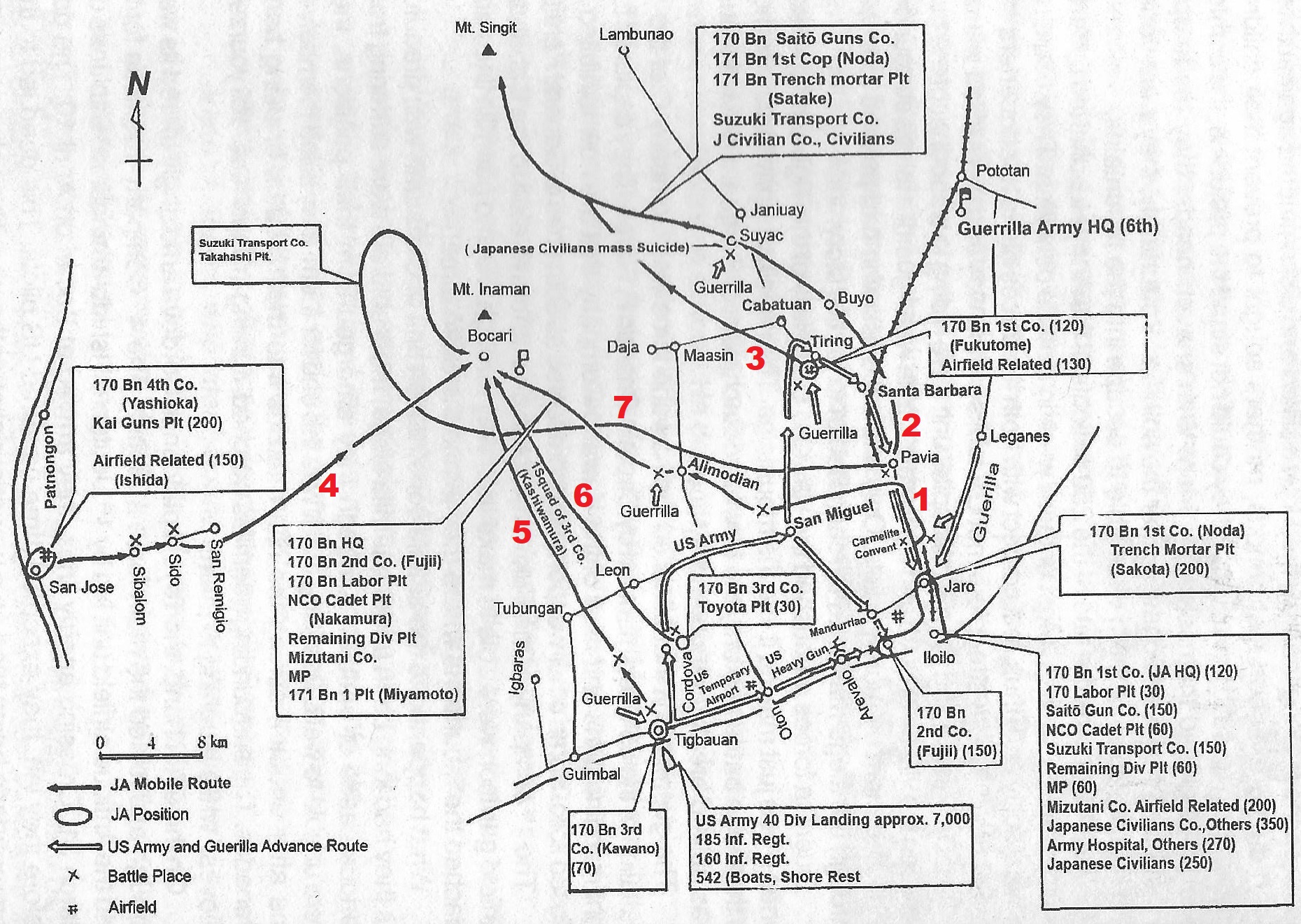

TOZUKA ORDERS EVERYONE TO CONVERGE ON THE ASSEMBLY POINT AT JARO,
BREAK THROUGH THE GUERRILLA LINES THERE, AND
WITHDRAW TO THE MOUNTAINS OF BUCARI
At the meeting, the headquarters staff all looked tense. Apart from Lieutenant Colonel Ryoichi Tozuka (unit commander). 1st Lieutenant Ishikawa, and myself, there were the following: Army Doctor Egami, Finance Officer 1st Lieutenant Kuge, 1st Lieutenant Yamamoto (deputy commander of the machine-gun force), Lieutenant Fujii of the 2nd Company, Captain Kaneyuki Koike (Kempeitai commander), and Lieutenant Noda of the 1st Company of the Tanabe unit, Commander Suzuki of the Transport Company, and 1st Lieutenant Mizutani (commander of the oil tank construction unit), a captain in charge of engineering of the airfield construction unit, Commander Ika of the Hôjin Company, 1st Lieutenant Nakamura of the remaining 102nd Division forces, President Kimura of the Japanese Association (Nihonjin-kai), and Medical Doctor Tanaka of the Iloilo Army Hospital. With a few dozen men, Captain Torao Saitô (machine gun unit commander) had left the previous night to lead the retreat of the Santo Rosario garrison at Guimaras. They managed to get back later that evening.
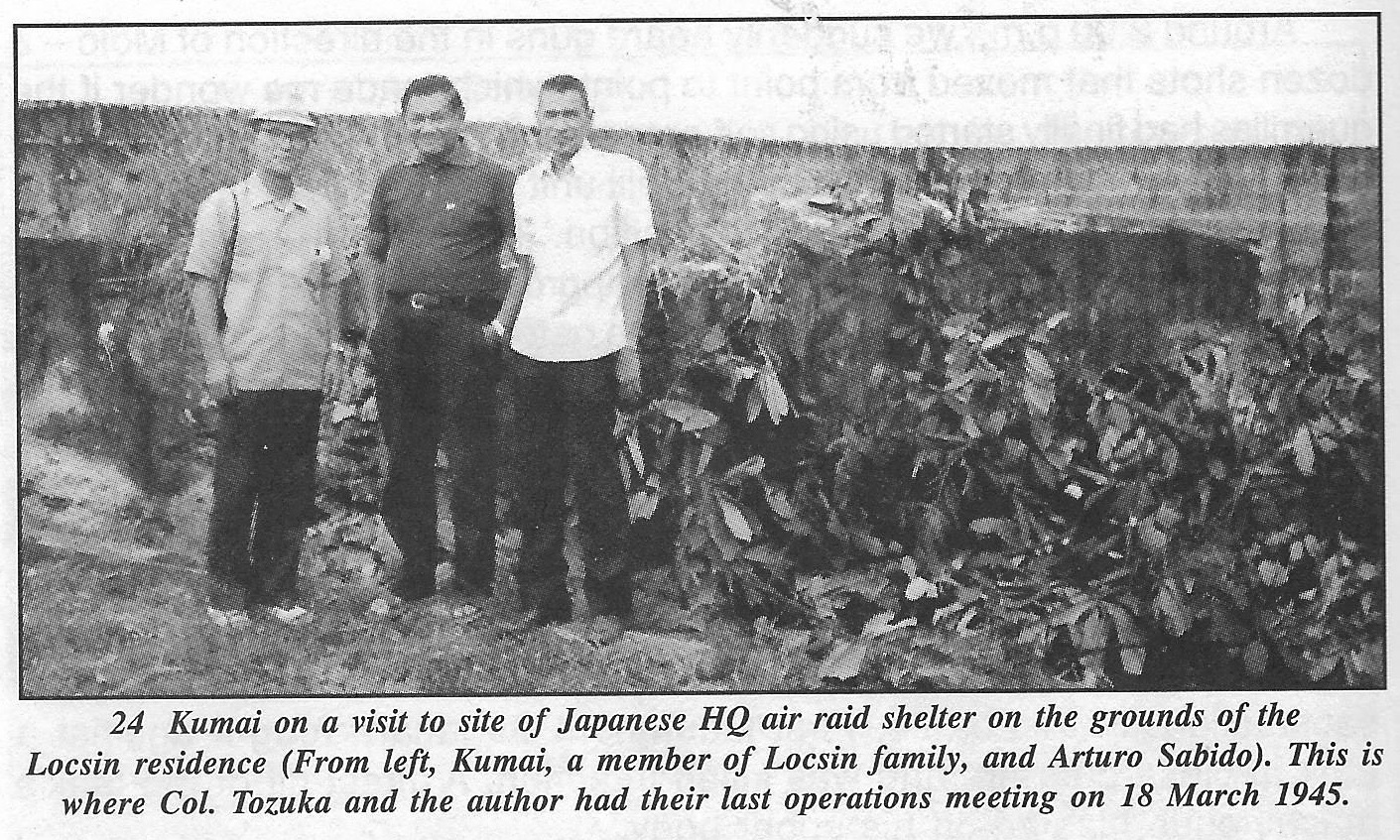
|
Colonel Tozuka ordered the abandonment of Iloilo City and the move towards Bocari. I then explained the plan. The plan of the operation was to break through enemy positions at Jaro by force. The front right line, under the command of Captain Torao Saitô, consisted of around 450 men of the machine-gun force, the NCO cadet force, the transport company, the labor platoon attached to the headquarters, and the communication unit. There were around 200 men from the Noda Company of the Tanabe unit and a mortar platoon at the front left line. With the road between Jaro and Pavia at the center, the Saitô Force on the right, the Noda Force on the left, the course of the attack was all left with Captain Saitô, with lst Lieutenant Ishikawa as adviser.
The attack was to commence at 8 p.m. that night, since we would have to force our way through enemy lines before the moon rose at 10 p.m. Before reaching Pavia, we should make a quick turn towards the direction of San Miguel. Behind the first line, the 60 men of the headquarters unit, 60 men of the Kempeitai, 180 of the Mizutani Force, 50 of the remaining 102nd Division Nakamura unit, 200 Hôjin, 80 of the Hôjin Company, the Army Hospital Force and 300 patients, were to follow. Then, the 20 trucks and 20 horses, guarded at the rear by 150 members of the Fujii Company. It was emphasized to all that everyone should arrive at Alimodian by dawn of the next day.
The final unsolved problem involved 50 patients in serious condition. I could not give them the instructions and asked the hospital chief, Army Doctor Tanaka, to do so. He seemed to have already made up his mind and replied in a low clear voice, ‘We will take care of the patients who cannot move.’ He looked pale.
On top of these points were the following instructions: the Philippine Railway, the Shimamoto Shipping Company, the bombs stored in the old Spanish barracks at Fort San Pedro, the electric generation plant, the telephone office, and Forbes Bridge between Iloilo and La Paz should be , destroyed. The military notes stored in the consulate should be burned along with the building it occupied. The Kempeitai commander, Kaneyuki Koike, was to request Governor Caram and Iloilo City Mayor Ybiernas to join the Japanese Army, but that he should not force them to do so. There was a strict ban against setting houses on fire and killing civilians. ‘Don’t ‘ set fire. Don’t kill. We’re fighting against the US, not against the guerrillas.’ Finally, the instructions stressed that the forces should assemble at Jaro before 8 p.m. The planning meeting adjourned around 5 p.m. By then, enemy planes were flying very low over the city.
Section 8.2

In the light of the flames, soldiers assembled on the main road in front of the unit commander’s quarters and, set out on a silent march.
As we passed the San Pablo hospital, Hôjin women called out to us one after another, sadly pleading, ‘Help us, please, soldiers, we depend on you.’ I felt sympathy for the Hôjin and heavy-hearted about the future.
Passing by the Provincial Capitol, my joyful memories of the past in Iloilo City rushed through my mind. Further ahead, the Lopez residence stood surrounded by trees, reminding me of the happy days when I was invited there.
I yelled on loudly, ‘Do not set this on fire!’ as we continued to advance, past the Iloilo High School building where our former headquarters had been, and the home of the Cacho head of the PECO that used to be the commander’s residence.
The Iloilo Normal School and the Army Hospital were on fire. The Hospital must have been set on fire after the patients who could not move had killed themselves. I felt very sorry for them.
However, after we passed Jaro plaza, all the emotions disappeared. The coconut groves stood silently in the dark.
Section 8.2

READY TO BREAK THROUGH THE GUERRILLA LINES
Section 8.2

CAPT NODA AND CAPT SAITO COMPOSE THE FRONT LEFT AND FRONT RIGHT RESPECTIVELY
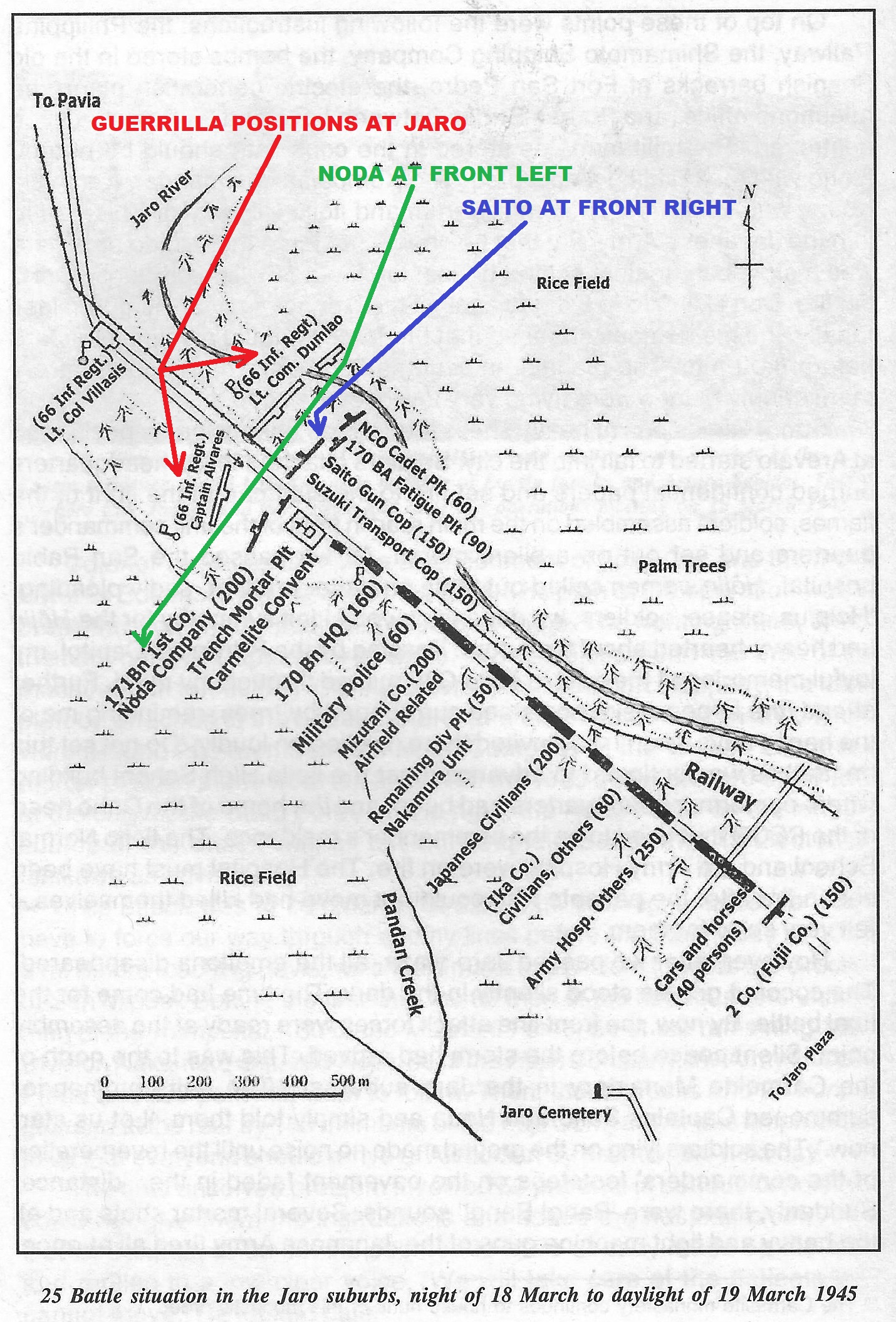
|
|
Note from Ronnie Miravite Casalmir: The above caption should be "night of 19 March to daylight of 20 March 1945" |
With the road between Jaro and Pavia at the center, the Saitô Force on the right, the Noda Force on the left, the course of the attack was all left with Captain Saitô, with lst Lieutenant Ishikawa as adviser.

|
|
Note from Ronnie Miravite Casalmir: The above caption should be "night of 19 March to daylight of 20 March 1945" |
Behind the first line, the 60 men of the headquarters unit, 60 men of the Kempeitai, 180 of the Mizutani Force, 50 of the remaining 102nd Division Nakamura unit, 200 Hôjin, 80 of the Hôjin Company, the Army Hospital Force and 300 patients, were to follow. Then, the 20 trucks and 20 horses, guarded at the rear by 150 members of the Fujii Company.
Section 8.2

SPEARHEADED BY CAPT NODA AND CAPT SAITO
Suddenly, there were ‘Bang! Bang!’ sounds. Several mortar shots and all the heavy and light machine guns of the Japanese Army fired all at once.
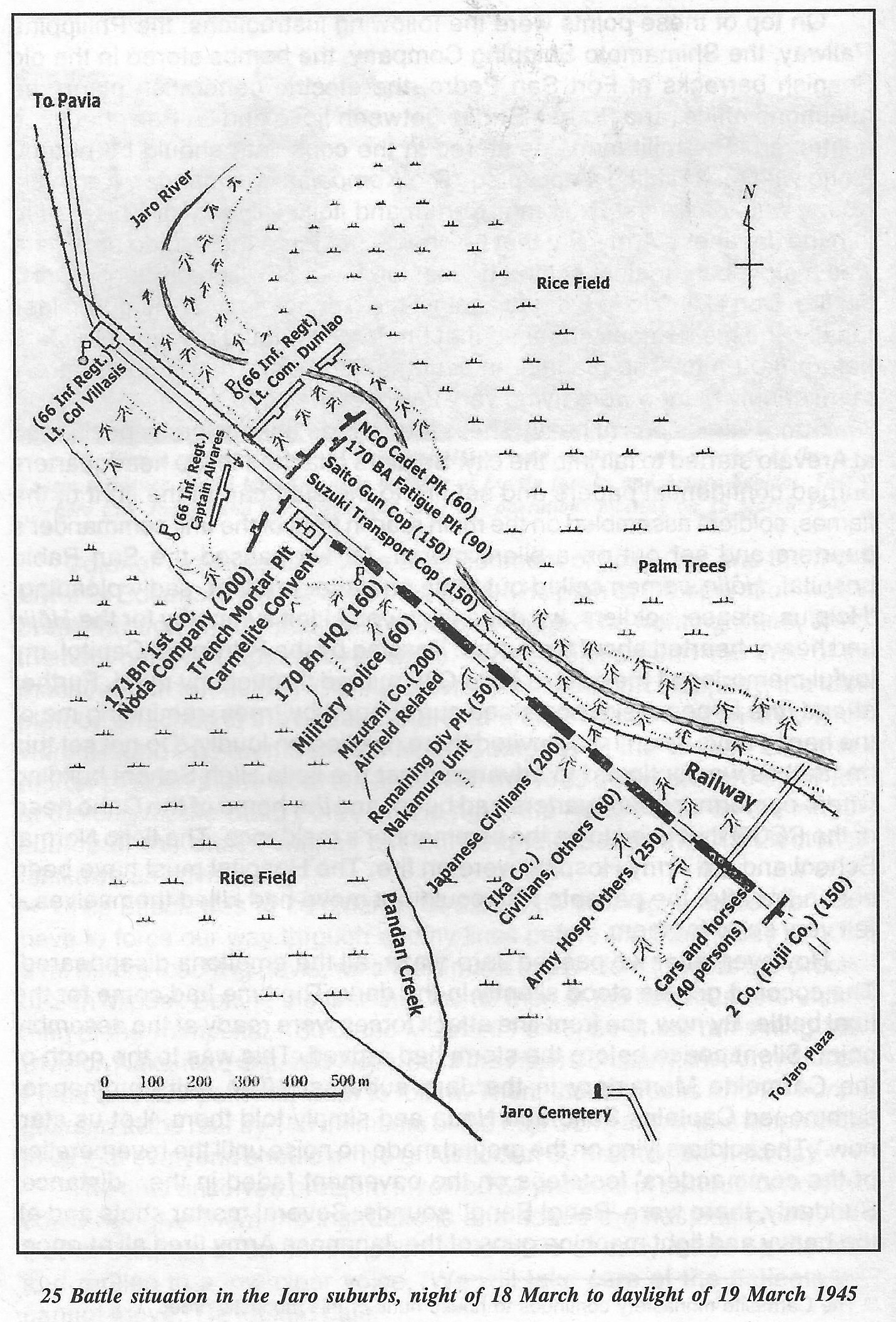
|
|
Note from Ronnie Miravite Casalmir: The above caption should be "night of 19 March to daylight of 20 March 1945" |
Section 8.2

Section 8.2

Whenever there was the slightest movement on the Japanese side, the enemy showered us with bullets. Eventually, news came that the front line commander Saitô was wounded. Colonel Tozuka and I were shocked, but immediately assigned 1st Lieutenant Yamamoto to replace him. Thus, March 18 passed* in this continuous exchange of firepower.
|
Note from Ronnie Miravite Casalmir: *Kumai must have meant the end of daylight, or nightfall, of March 19, 1945. |
Section 8.2

BUT BEFORE THEY CAN DO SO, THE GUERRILLAS PUT OUT A HEAVY FIRE
|
Note from Ronnie Miravite Casalmir: *This is the correct time and date, dusk of March 19, 1945. |
Since the main officers of the company were slain, the Noda force could not make the attack. I felt that a tragic end was rapidly falling upon us and was irritated that no good ideas were forthcoming. I only ordered all the vehicles to be burnt. Mortar fire continued. As I had sent a messenger to see how the Hôjins were doing, I heard that the women and children were getting bored and that some were making tea that the children wanted. They did not comprehend the mortal combat going on so close by, and I was concerned how they would react to this reality.

|
Section 8.2

From Jaro, to just before Pavia plaza, to San Miguel, to Alimodian, to Bocari
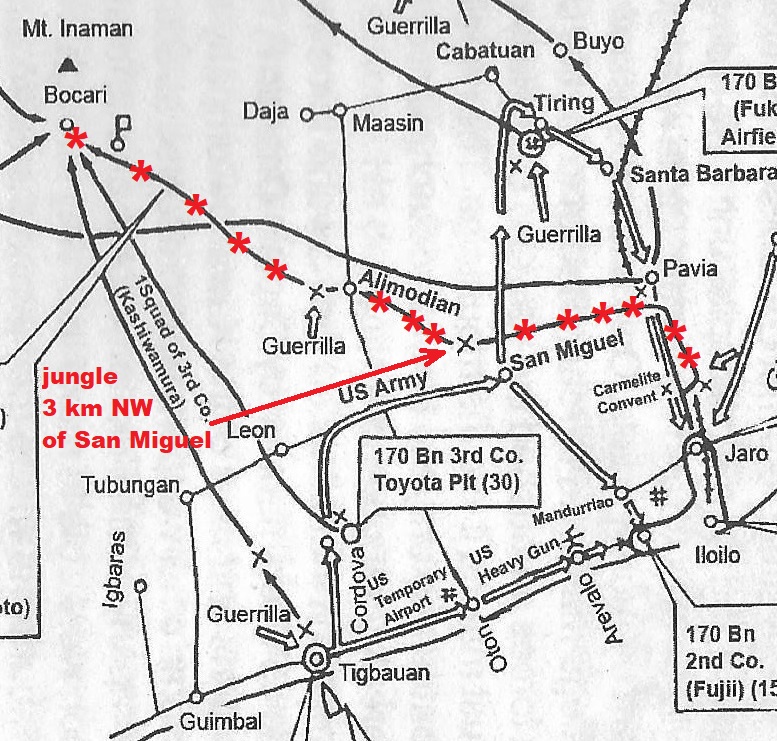
This group was composed of:
1. 170 Bn HQ
2. 170 Bn 2nd Co. (Fujii)
3. 170 Bn Labor Plt
4. NCO Cadet Plt (Nakamura)
5. Remaining Div Plt
6. Mizutani Co.
7. MP
8. 171 Bn 1 Plt (Miyamoto)

TOZUKA FINALLY TURNS RIGHT AND CROSSES THE JARO RIVER
At around 4 a.m. of March 19*, Lieutenant Fujii, commander of the 2nd Company that was posted as rear guard, surprised the headquarters staff by showing up suddenly. He said: ‘Shall the 2nd Company cross the Jaro River on the right and attack from that side? The rear would be empty without their protection, exposing the Hôjin Company, hospital patients, and Hôjin women and children left behind. Otherwise, however, we would all be destroyed.’ Colonel Tozuka then ordered, ‘All right, Fujii. Do that.’
|
Note from Ronnie Miravite Casalmir: *This should be 4 a.m. of March 20, 1945 (early morning the following day) |
Before long, the Fujii Company crossed the Jaro River. In the hope that other forces would follow them, the headquarters ordered an NCO liaison officer to guide the Hôjin. As soon as the Japanese forces started to cross the river, shouts of the attack – ‘Wah, wah’ – rose at the forefront. With those shouts, the whole group ran along the main road. As it had become light, we waited for the forces that followed within a coconut grove on the left bank of the Jaro River. Eventually, the Kempeitai, the Mizutani Force, the remaining Division forces, the NCO Cadet unit, and the Miyamato Platoon of Noda unit arrived – but without the Hôjin Company, the Hôjin women and children, and the Army Hospital patients.
The Saitô force, which had penetrated through enemy lines, was also out of contact. I dispatched 2nd Lieutenant Itsuki and several soldiers to look for those who were left behind and, if possible, to make contact with the Saitô Force. The headquarters’ group stayed in a dangerous zone three kilometers north of Jaro while waiting for the Hôjin. Soon, 2nd Lieutenant Itsuki returned running out of breath: ‘The enemy tanks are coming. When I was looking for the Hôjin and Army Hospital patients, I met the tanks and came back. At the height of the battle last night, dozens of Japanese and Filipino soldiers had fallen, lying on top of each other.’
Section 8.2

|
Note from Ronnie Miravite Casalmir: *This should be March 20, 1945 |
The march of the enemy that began around 8 a.m. went on late into the afternoon. By this time, local residents had joined the guerrillas and there was no end to their procession. We all hid ourselves in the trenches that the guerrillas had dug. Earlier, around 4 p.m., the procession had disappeared and we felt relieved. However, a few companies of guerrillas soon returned and spread out, coming close to where we were. Spreading a white signal panel, they formed a skirmish line 250 meters ahead of us. We could actually watch them being informed of our whereabouts by wireless telephone. At the same time, seven or eight tanks that had been moving towards Iloilo City along the Jaro-Pavia road noisily turned towards us. The low-flying enemy planes almost brushed the coconut grove where we hid.
When the guerrillas started to approach us, 1st Lieutenant Fujii whispered, ‘Do not shoot yet, do not. Let the enemy come close and shoot.’ The Filipino forces began to shoot in unison when they were as close as 200 meters of the grove. Instantly, the order was given, ‘Fire!’ Hence, our fire started all at once. From behind us, the tanks also began to fire. A terrible storm of firepower filled the coconut grove. There was no way of knowing where the bullets would come from. They struck the ground all around, sounding, ‘Puss! Puss!’ I placed my knapsack facing the tanks, grasped my pistol, and made up my mind to shoot and shoot when the enemy came close. I had not expected to remain so calm.
Around 5 p.m., the enemy firing rose to its climax. If it had gone on like that, the enemy would have gotten reinforcements while we would run out of ammunition. Eventually, corpses of Japanese soldiers would cover the coconut grove. As we were fighting with our last burst of energy, a miracle happened. First, the shooting from the guerrillas decreased and, gradually, they retreated. At the same time, the tanks behind turned away – making ‘Guyee, guyee’ sounds – and left towards the direction of lloilo City. The darkness of night fell and the coconut grove regained its stillness. There was no moon. Two bullets dropped off my knapsack and two pairs of my socks inside the pack had holes in them. Candlelights silhouetted the figures of nuns at the Carmelite monastery beyond the river. They must have been having a mass to celebrate of the liberation of Iloilo City. One of the soldiers ground his teeth, saying, ‘Shit! I’ll attack you!’ I told him ‘Stop, Stop’ as I held him back.
Although everyone was tired, I advised the unit commander to make an advance. I felt that there was something ominous about the swift retreat of the enemy and that we should reach our destination as soon as possible.
With the Fujii Force in front, we had been moving towards Pavia for seven or eight minutes when enemy artillery started shooting simultaneously at the coconut grove where we had been. The thuds – ‘Dahn, dahn’ – lasted for half an hour without interval. We had narrowly escaped by a hair’s breadth.
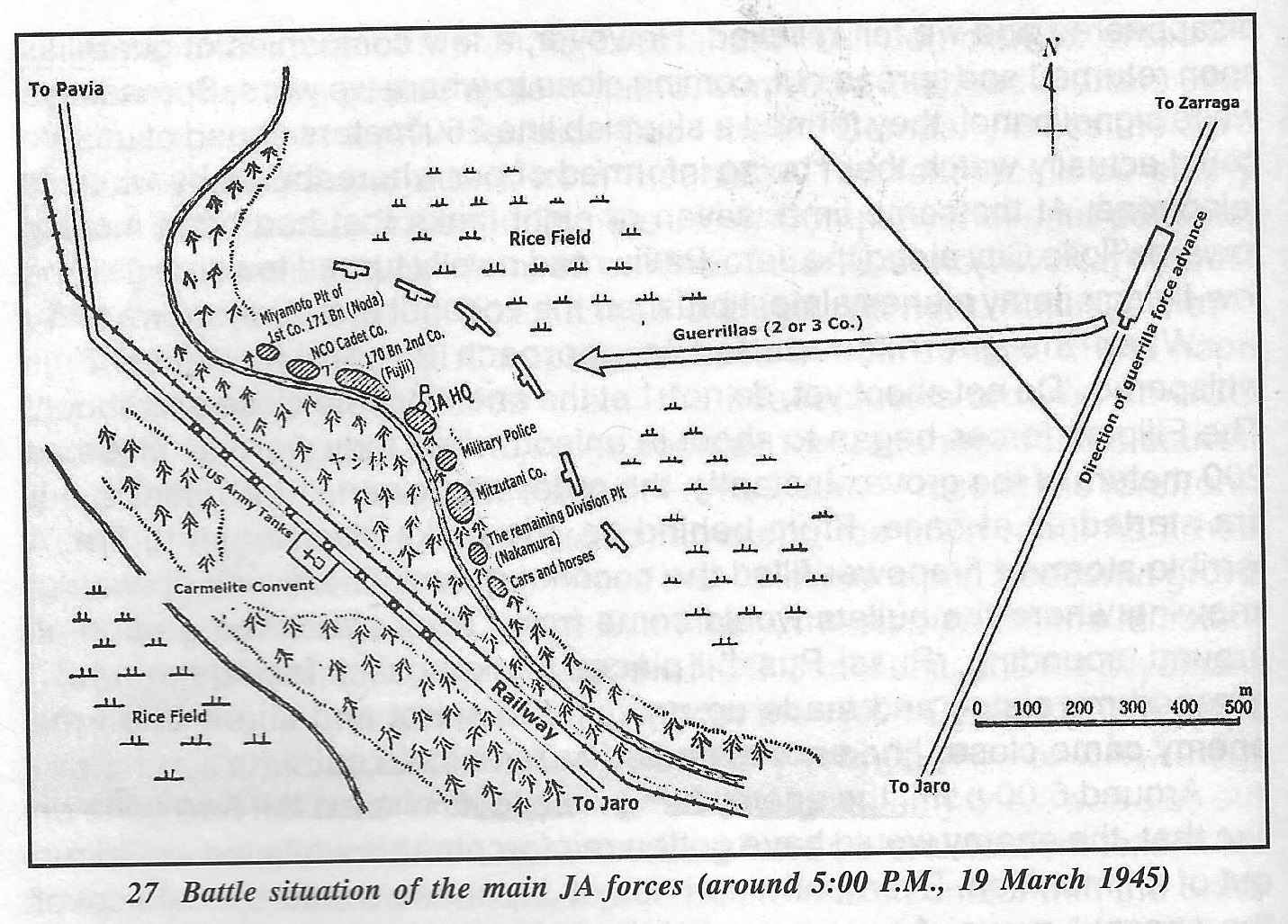
|
The guerrilla forces that met us near the Carmelite monastery in Jaro on the 18th and 19th of March were those of the 66th Regiment, led by Lieutenant Colonel Braulio Villasis, which had most soldiers coming from Capiz. To our left, by the side of the convent, were members of the 2nd Battalion led by Captain Alejo Alvarez. To our right, on the other hand, was the 1st Battalion led by Major Pantaleon Dumlao.
Section 8.2

AND PROCEEDS TO THE WEST TOWARDS SAN MIGUEL
Section 8.2

|
Before reaching Pavia, we should make a quick turn towards the direction of San Miguel. It was emphasized to all that everyone should arrive at Alimodian by dawn of the next day. Section 8.2 |


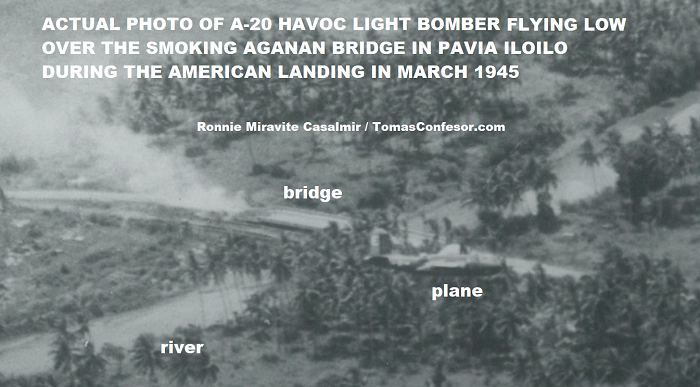

THREE KILOMETERS NORTHWEST OF SAN MIGUEL



Throughout the night of the 23rd, we marched briskly, even as a number of soldiers with us kept dropping. We could not do anything but to scold and encourage them to keep on walking. Some soldiers had been injured in the break through the enemy line and could no longer move on; quite a number of them took their own lives.


From Jaro to Mt. Bongbong, Lambunao (later the forces at Mt. Bongbong transferred to Mt. Singit, Lambunao).
From Jaro, to Pavia, to Santa Barbara, to Cabatuan, to Maasin, to Janiuay, to Lambunao.

Section 8.3
The Saitô forces, which had come to be separated from the main force, made a quick advance toward Pavia after engaging in a fierce combat.
In the early morning of March 19,* they had crossed the Jaro River behind the town hall of Pavia. They reached a coconut grove about half a kilometer northeast of the town where they stayed to wait for the rest of the group.
Captain Saitô dispatched a messenger squad to inform headquarters of their whereabouts; but upon meeting with enemy tanks, the squad returned without making contact.
Taking over command from the wounded Captain Saitô, 1st Lieutenant Yamamoto led the forces and the Hôjin.
They left the spot around noon, and by around 1 p.m., they reached a coconut grove about a kilometer and a half north of Pavia where they rested until it was dark. They started again at 8 p.m., passing three to four kilometers north of the town of Santa Barbara, and reached the heavily wooded area of Barrio Buyo, four kilometers east of the town of Cabatuan. They hid there the next day and resumed their movement at night. On the way, they frequently had to cross a road used by US military trucks.
Around 5 a.m. of March 21, they entered a mountainous area of Suyac of Barrio Tigbauan Road, part of Maasin, and about four and a half kilometers southwest of the town of Janiuay. It was in this forested mountainside with a river running below where they decided to take a rest until it was dark once more.
Sometime later that night of the 21st, around 40 Hôjin got together. The principal of the Iloilo Japanese School Kayamori spoke out what was in his mind, ‘I feel that we should not be a further burden to the soldiers. Let us die here.’ Others thought it better to live even if humiliated. Nevertheless, they sang their farewell song in unison – Umi Yukaba (If I Go to Sea) – and bowed in the direction of the Imperial Palace. Some killed themselves with pistols and hand grenades. Failing to kill themselves, some mothers in agony sought the help of passing straggling and wounded soldiers who used bayonets or hand grenades.
Some of those soldiers finally caught up with the Saitô force and told the others of the mass suicide (jiketsu). The news spread among the soldiers and finally reached Captain Saitô. He was shocked; he ordered Corporal Katsuyoshi Yamaguchi of the headquarters wire communications unit and several other soldiers to confirm the news of the Hôjin suicides.
This group was composed of the following:
1. 170 Bn Saito Guns Co.
2. 171 Bn 1st Cop (Noda)
3. 171 Bn Trench Mortar Plt (Satake)
4. Suzuki Tansport Co.
5. J Civilian Co., Civilians

3. Taiwanese Comfort Women
From Jaro to Mt. Bongbong / Mt. Singit
Section 8.3 There were ten Taiwanese comfort women among the Hôjin in this life or death escape. Along the way, the Hôjin disliked and discriminated against them. Even during the short rest periods, mothers sought to prevent their children from coming close to them. Since they could not stand the prejudice, the comfort women disguised themselves as men. With shaven heads, they made up a group of their own and chased after the soldiers. Fortunately, they were young and healthy so all of them were able to escape into the mountains.

4. Army Hospital Force and Patients
From Jaro to Bocari and Mt. Bongbong / Mt. Singit
Section 8.3 More tragic was the fate of the 250 patients of the Army Hospital led by Army doctor Captain Tanaka. Most of them were in serious condition. They could not move quickly and, thus, lost contact with both the forces of the headquarters and that of Saito. These stragglers met US tanks on the way and were killed without a fight. Dr. Tanaka and the main Hospital unit were hiding in a sandbar of the river between the village of Buyo and the town of Pavia when guerrilla forces surrounded and killed them by mortar shells. Only a few medics who had pushed their way through the siege managed to reach Bocari to tell the story.

5. Cabatuan Airfield (Fukutome)
From Cabatuan Airfield to Mt. Bongbong (later the forces at Mt. Bongbong transferred to Mt. Singit).

The 1st company of the Fukutome force and others related to the Cabatuan airfield garrison were able to make their way through US and guerrilla lines and reached the mountains where they joined the Saitô force.
What happened to the airfield construction unit of Cabatuan was dreadful. As they had long been under guerrilla siege, most soldiers were suffering from serious cases of beriberi. Although they emerged from their positions, they were unable to walk. Realizing that it was the end for them, they killed themselves one after another, aiming the rifle muzzles into their mouths or using hand grenades. The surrounding guerrillas watched, cursing in Japanese, ‘Kill yourself, thieves,’ while laughing at them.
This group was composed of:
1. 170 Bn 1st Co. (120 men) (Fukutome)
2. Airfield Related (130 men)
See also: Cabatuan Airfield

6. San Jose, Antique
From San Jose, Antique to Bocari

Kumai provided two versions of the withdrawal from San Jose, Antique, both in Section 8.3 of The Blood and Mud in the Philippines.
The first version had the Antique force meeting them at Cagay on March 22, 1945.
Section 8.3 At the village of Cagay on the 22nd, we were fortunately able to make the prearranged contact with the Yoshioka Force from San Jose, Antique. We had sent them a radio message to abandon San Jose and move to Bocari.The second version had the Antique force abandoning San Jose on March 31, 1945.
Section 8.3 The 4th Company Yoshioka force and the Antique airfield unit led by 1st Lieutenant Ishida abandoned San Jose on March 31. Crossing enemy lines, they arrived at Bocari on April 10. The day before they left, they executed three captured US pilots. This deed led to the commander’s being tried as a war criminal after the war. They also set a time bomb just before they left. When it exploded, it killed soldiers of a platoon of Company A of the 6th Regiment, including the company commander, Captain Anicetas V. Daguinotan.In the joint trial of Yoshioka and others, they were charged with the killing of American servicemen that happened on March 19, 1945 and March 31, 1945 in San Jose, Antique.
This group was composed of:
1. 170 Bn 4th Co. (Yashioka*)
2. Kai Guns Plt (200 men)
2. Airfield Related (130 men) (Ishida)
*Yoshioka

7. Tigbauan
From Tigbauan to Bocari.

3rd Company 170th Bn (Kawano)
Guerrilla forces ambushed the Kawano Company of the Tigbauan garrison when it was just making it into the mountains. The main company force perished in the fierce battle and only the forward detachment of Sergeant Kashiwamura was able to break through enemy lines.
The guerrilla unit that attacked the Kawano force was Company C of the 1st Battalion of the 65th Regiment led by Captain Orlando P. Flores. They captured the light machine guns and rifles of the Kawano Company that are now exhibited at Museo Iloilo.
This group was composed of:
1. 170 Bn 3rd Co. (70 men) (Kawano)

8. Cordova
From Cordova to Bocari.

On the other hand, the Toyota platoon at Cordova amazingly forced its way through and joined the main force at Bocari.
This group was composed of:
1. 170 Bn 3rd Co. Toyota Plt (30 men)

9. Pavia
From Pavia to Bocari.


